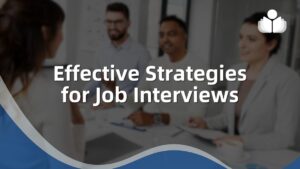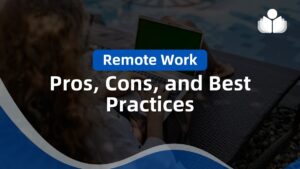Organizational sustainability is often misunderstood to mean primarily financial sustainability. That misconception occurs because, when an organization becomes unsustainable, the symptoms of that problem show up in the finances. However, organizational sustainability — or the surviving or even thriving of an organization — depends on much more than effectively managing the organization’s finances. Just like the sustainability of individuals and families, there are many complex and dynamic dimensions that must be sustainable in organizations, as well. However, in an organization, there are some primary dimensions that, if they are managed well, will ensure the sustainability of the organization.
- If You’re Looking for the topic of Sustainable Business Development (e.g., “Green” Sustainable Development), then see Sustainable Business Development
- Guidelines for accomplishing nonprofit sustainability are included in the books Field Guide to Consulting and Organizational Development with Nonprofits, Strengthening Nonprofit Performance: A Funder’s Guide to Capacity Building and Coping With Cutbacks: The Nonprofit Guide to Success When Times Are Tight.
Sections of This Topic Include
- Primary Dimensions of Organizational Sustainability
- Sustainability of For-Profit and Government Organizations
- Sustainability of Nonprofit Organizations
- Suggestions to Address Current Sustainability Problems
Learn More in the Library’s Blogs Related to Organizational Sustainability
In addition to the articles on this current page, see the following blogs which have posts related to Organizational Sustainability. Scan down the blog’s page to see various posts. Also, see the section “Recent Blog Posts” in the sidebar of the blog or click on “Next” near the bottom of a post in the blog.
- Library’s Consulting and Organizational Development Blog
- Library’s Leadership Blog
- Library’s Supervision Blog
Also, consider
Related Library Topics
Primary Dimensions of Organizational Sustainability
1. Strategic Sustainability — Ensure Realistic Vision and Goals
If an organization is trying to do far too much, it will likely not have enough resources, including not enough money to do what it wants to do. One of the most important considerations is to have a realistic vision and goals for the organization. If these are not realistic, then many of the other activities in the organization will not be realistic, as well. The solution is not to keep trying to get more money.
2. Product and Program Sustainability — Ensure High-Quality Products, Services and Programs
If your organization does not have high-quality products, services, and programs, then customers’ and clients’ participation will eventually decline as will funding. That’s why it’s so important to do a few things very well, rather than a lot of things not so well. The solution is not to keep trying to get more money to offset deficits. The solution is to pick which products, services, and programs you can do very well, do them — and keep proving your strong results.
3. Personnel Sustainability — Ensure Personnel Can Effectively and Reliably Perform
If your personnel do not fully understand their jobs or are not resourced to do their jobs, then your products, services, and programs will not be as effective as they could be. As a result, you’ll make less money than you expected or the money you do make will not generate as much profit. Be sure personnel are fully trained and supervised well. Also be sure that, if a member of the organization cannot do his/her job, that someone else can do that job in a timely fashion.
4. Financial Sustainability — Conduct Financial Reserve and Contingency Planning
If the above 3 dimensions are not effectively addressed, then symptoms show up in the finances when there’s not enough money. However, there are two financial practices you should be doing regardless of whether you have enough money or not, and they include:
- Achieving a financial reserve — obviously, this is done over time and before a financial crisis occurs.
- Doing contingency planning — plan for what will happen if you get 10% less money than planned for the upcoming year and for what will happen if you get 30% less.
The following sections and links will help you address the above dimensions for your for-profit, nonprofit, or government agency.
Avoiding Sustainability Issues in For-Profit and Government Organizations
Strategic
The following links will help ensure that your strategic planning results in realistic visions and goals.
In the topic at the above link, be sure to see the following articles:
- How NOT to Do Strategic Planning
- Always First Do “Plan for a Plan”
- Sanity Solution
- Basics in Developing a Vision Statement
- Do a Grand Vision and Strategic Vision Statement
- Basics of Action Plans (as Part of Strategic Planning)
- How to Change the Plan
- Embedding Sustainability in Organizational Culture
- The Power Values that Drive Sustained Profitability
Also, consider
Strategic Planning
Products, Services, and Programs
One of the best ways to ensure that these are carefully planned — or reviewed — is to do business planning. (There is often confusion about the difference between strategic planning and business planning. Strategic planning is planning for the entire organization. Business planning is focused on a particular product or service.)
- Various Approaches to Building Products and Services (the Business Planning approach is best)
- Business Planning (For-Profit)
- Program Planning (For-Profit)
Also, consider
Personnel
Also, consider
Human Resources
Staffing
Financial
Financial Management (For-Profit)
Also, consider
Financial Management (for-profits)
Financial Management (nonprofits)
If You Resort to Trying to Get More Funds, Then See
To Develop and Implement Organizational Sustainability Plans
- Organizational Assessment of For-Profits (to identify what areas to improve)
- Guidelines, Methods, and Resources for Organizational Change Agents
- Getting Professional Help
Avoiding Sustainability Issues in Nonprofit Organizations
Strategic
The following links will help ensure that your strategic planning results in realistic visions and goals.
In the topic at the above link, be sure to see the following articles:
- How NOT to Do Strategic Planning
- Always First Do “Plan for a Plan”
- Sanity Solution
- Basics in Developing a Vision Statement
- Do a Grand Vision and Strategic Vision Statement
- Basics of Action Plans (as Part of Strategic Planning)
- How to Change the Plan
Products, Services, and Programs
One of the best ways to ensure that these are carefully planned — or reviewed — is to do business planning. (There is often confusion about the difference between strategic planning and business planning. Strategic planning is planning for the entire organization. Business planning is focused on a particular product or service.)
Personnel
Financial
Financial Management (Nonprofit)
If You Resort to Trying to Get More Funds, Then See
To Develop and Implement Nonprofit Organizational Sustainability Plans
- Organizational Assessment for Nonprofits (to identify what areas to improve)
- Nonprofit Capacity Building (to undertake activities to improve areas)
- Getting Professional Help
Suggestions to Address Current Sustainability Problems
If you currently have problems with sustainability, the following links to resources will be helpful. Your most immediate concern now is very likely that of insufficient financial resources. Keep in mind that financial problems are usually a symptom of other causes, which usually can be addressed by following the guidelines in the resources linked from the above sections of this topic. However, for now, it’s very likely most important to address a shortage of financial resources. There are a variety of strategies in the resources from the following links. After addressing the financial issues, you should review the guidelines referenced from the links in the above sections to help your organization avoid financial crises in the future.
Suggestions for For-Profits
- Business Cost-Cutting Ideas
- Cost-cutting ideas for Small Businesses
- Commentary: Cost-saving measures for businesses short of layoffs
- Temporary Cost-Cutting Measures Violate the Wage and Hour Laws
- Recession Cost-Cutting No-Nos
- Could Fewer Products Lead to More Profits?
- In Bad Economic Times, Should You Fire Clients?
- People Problems Masquerading as Business Problems
- How to Reduce Small Business Costs
- Why Businesses Succeed and Fail
Suggestions for Nonprofits
Many of the problems faced by nonprofits are also faced by for-profit. So it’s useful to review some of the resources in the above suggestions for for-profits.
- Nonprofit Survival Tips
- Cost Cutting (these are suggestions for for-profits, but most apply to nonprofits, too)
- Succeeding Through Tough Times
Additional Library Resources in the Category of Organizational Sustainability and Change
 Sections of this topic
Sections of this topic
















